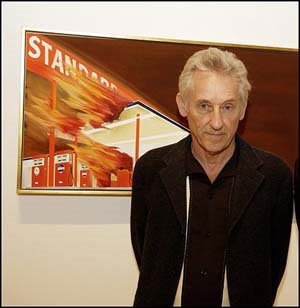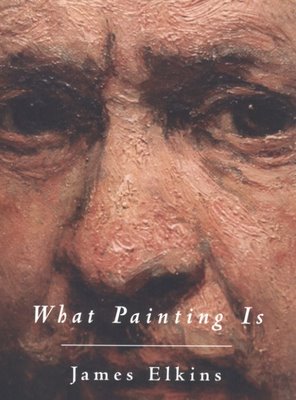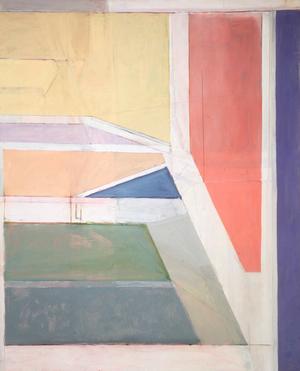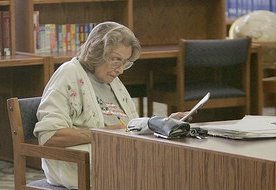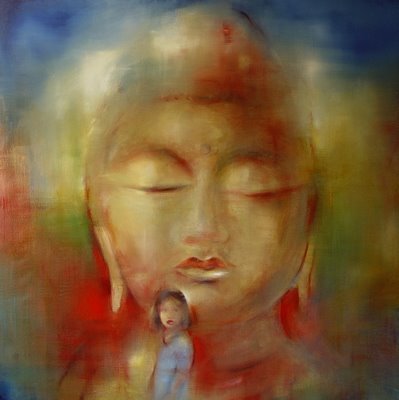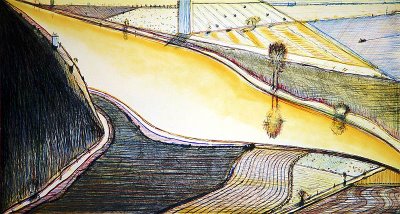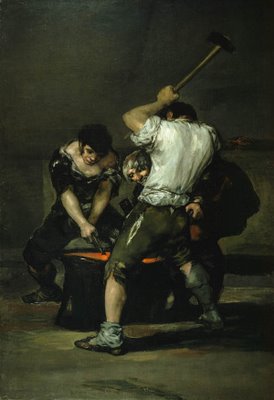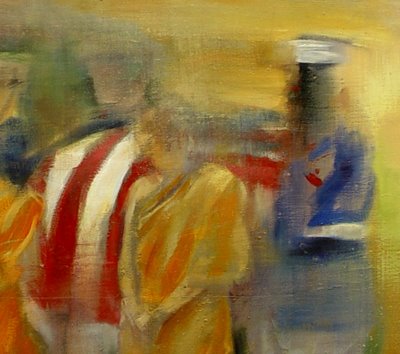
Arshile Gorky
"The Artist and His Mother"
1926-36 oil on canvas 60 x 50 in.
Whitney Museum of American Art, New York
Gift of Julien Levy for Maro and Natasha Gorky in memory of their father
© 2000 Estate of Arshile Gorky/Artists Rights Society (ARS), New York
Today's New York Times reports that a new study by the Solomon R. Guggenheim Museum suggests that "learning about paintings and sculpture helps children become better students in other areas." The study cites "improvements in a range of literacy skills among students who took part in a program in which the Guggenheim sends artists into schools. The study, now in its second year, interviewed hundreds of New York City third graders, some of whom had participated in the Guggenheim program, called Learning Through Art, and others who did not."
"The study found that students in the program performed better in six categories of literacy and critical thinking skills — including thorough description, hypothesizing and reasoning — than did students who were not in the program. The children were assessed as they discussed a passage in a children’s book, Cynthia Kadohata’s “Kira-Kira,” and a painting by Arshile Gorky, “The Artist and His Mother.”
The Whitney Museum describes "The Artist and His Mother" as "arguably Gorky's masterpiece." Michael FitzGerald in the Whitney's Archive Research Project on Gorky goes on to explain that the "painting is based on a photograph of the young Gorky and his mother, taken in 1912, before the Turkish massacre of Armenians during World War I, when Gorky, his mother, and his sister were sent on a death march. His mother never recovered her health; she died in 1919 and the fifteen-year-old Gorky emigrated to America."

The publisher summarizes Cynthia Kadohata’s “Kira-Kira" :
"Kira-kira" is Japanese for glittering or shining. Glittering. That's how Katie Takeshima's sister, Lynn, makes everything seem. The sky is kira-kira because its color is deep but see-through at the same time. The sea is kira-kira for the same reason. And so are people's eyes. When Katie and her family move from a Japanese community in Iowa to the Deep South of Georgia, it's Lynn who explains to her why people stop them on the street to stare. And it's Lynn who, with her special way of viewing the world, teaches Katie to look beyond tomorrow. But when Lynn becomes desperately ill, and the whole family begins to fall apart, it is up to Katie to find a way to remind them all that there is always something glittering — kira-kira — in the future."
Both Gorky's painting and Kadohata's novel portray the world from a child's eye and give voice to stories of growing up in a difficult and at times brutal world. It makes sense that diving into discussions of these artworks would help children open up intellectually and provide them with a sense of mastery. All too often, the voices, needs, and stories of children are hidden or forcibly repressed.
"While it is unknown exactly how learning about art helps literacy skill, the hypothesis is that the use of both talking about art and using inquiry to help students tease apart the meaning of paintings helps them learn how to tease apart the meanings of texts, too. They apply those skills to reading.”
- Johanna Jones, a senior associate with Randi Korn and Associates, a museum research company conducting the study over three years with a $640,000 grant from the federal Department of Education.












